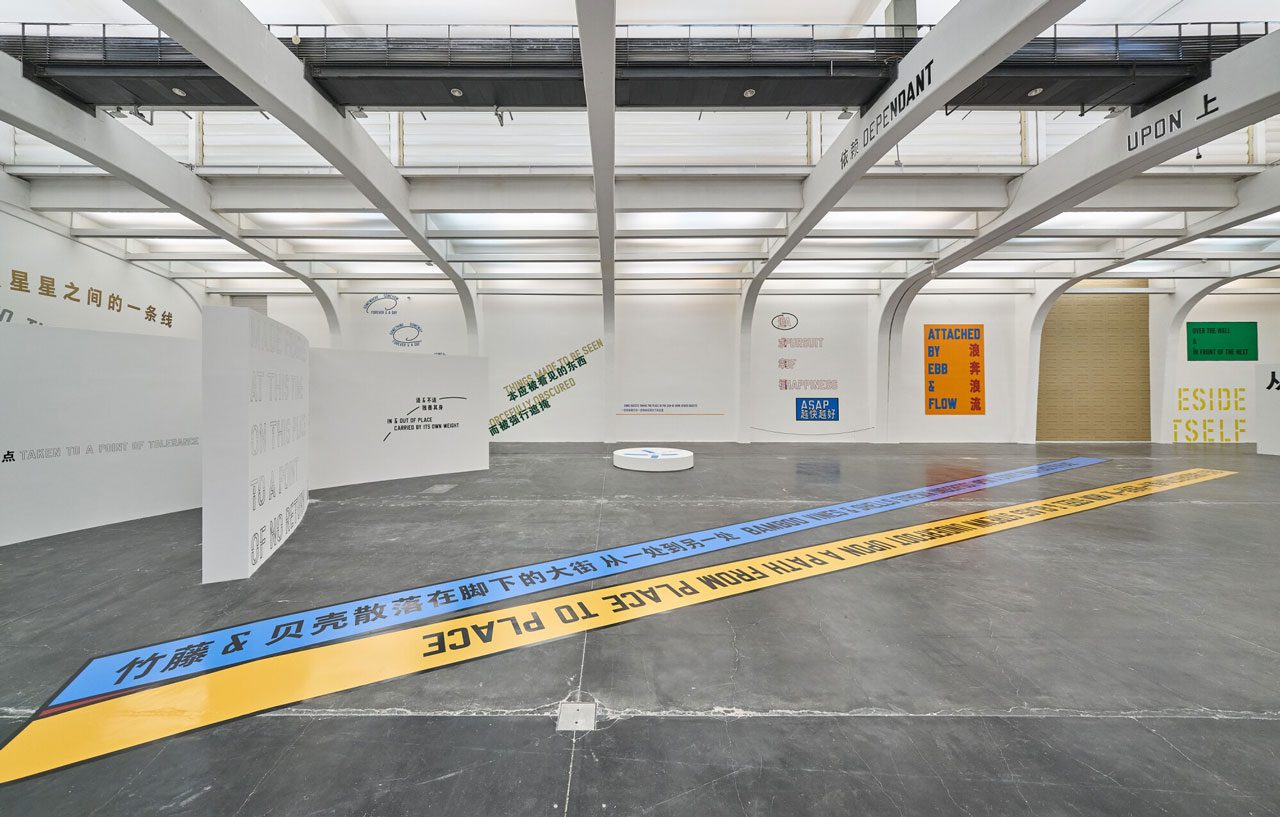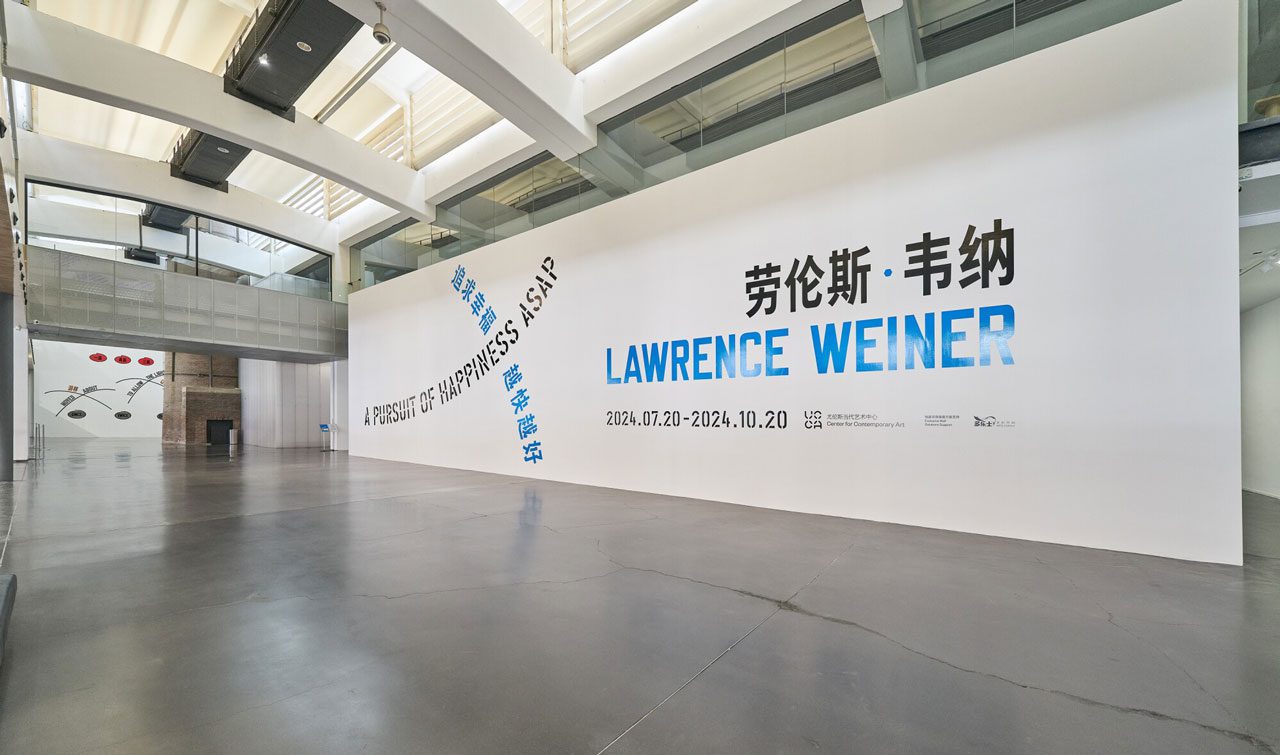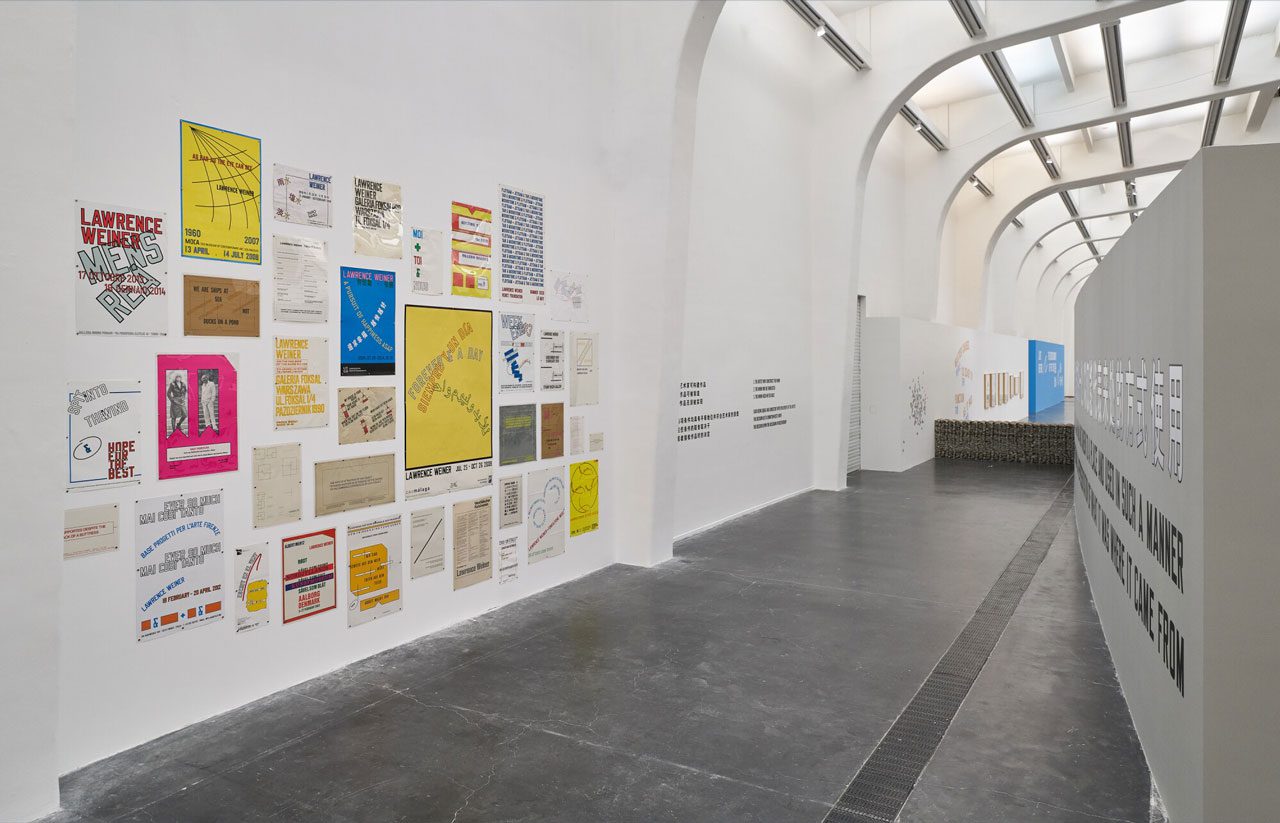ART CITIES: Beijing-Lawrence Weiner
 From 1968 onwards, Lawrence Weiner has presented his work using language and, as such, the artist is historically regarded as one of the pioneering practitioners of Conceptual Art. The artist himself categorically refuses that designation, preferring to focus on the material aspects of his work. Nevertheless, his oeuvre has been largely received in terms of a predominantly linguistic intervention.
From 1968 onwards, Lawrence Weiner has presented his work using language and, as such, the artist is historically regarded as one of the pioneering practitioners of Conceptual Art. The artist himself categorically refuses that designation, preferring to focus on the material aspects of his work. Nevertheless, his oeuvre has been largely received in terms of a predominantly linguistic intervention.
By Dimitris Lempesis
Photo: UCCA Archive
The survey exhibition “A PURSUIT OF HAPPINESS ASAP” is Lawrence Weiner’s first major presentation in China, showcasing nearly fifty works in language that span his trailblazing career, drawn from the almost 1200 he created over more than half a century. Selected drawings, posters, and moving images provide additional context for viewers, whom Weiner referred as the “receivers” of his work. Each piece finds expression in the specific spaces of UCCA’s Great Hall, allowing subjective reflection depending on circumstances, relationships, setting, and presentation. While often associated with the development of Conceptual Art in the United States and Europe, Weiner’s language-based practice is notable for its simplicity and accessibility, as well as its invitation to audiences. In 1968, following a public installation that he created on a college campus, Weiner realized that he could achieve a similar result without physically constructing the sculpture. This led him to formalize a foundational philosophy for his work, which has since become influential in the subsequent development of contemporary art: 1: The artist may construct the piece. 2: The piece may be fabricated. 3: The piece need not be built. Each being equal and consistent with the intent of the artist, the decision as to condition rests with the receiver upon the occasion of receivership. Since then, Weiner has used language as a material and structure to create works that describe what he termed “the relationships of objects to objects in relations to human beings.” Despite his reliance upon words, the artist was clear that he understood himself as a sculptor. “The work that I do uses language,” he said in 2005, “but it’s all about material.” Incorporating the ease with which we read certain phrases, Weiner worked with words in ways that expand and contract meaning. He might place a common phrase (“in & out”) with another (“out of place”), layering them like a collage (“in & out of place”) to expose aspects of their construction. Deeply attuned to both popular and technical languages, he embraced the accessibility of familiar sayings of the common culture while also employing terminology from chemistry, physics and other natural sciences. This combination grounds his work in the folkways of vernacular, everyday communication but also in elemental materials, drawing out a deep poetry from the world and its inhabitants. Though he insisted that “the piece need not be built” in order to exist, the generous terms that he created for his art allowed it to spread across all genres: in sculpture foremost, but also drawing, music and sound, moving images, books, posters, fashion and ephemera. While presenting his art in countless variations of font, surface application, scale, language and location, Weiner was unfailingly precise in how he conceived a work, carefully arranging the words in relation to one another to achieve his intended form and effect. But he was also clear that a work should make itself available for use, which allows its expression to shift and change depending on the demands of place and audience. Weiner designed and installed his work in a variety of ways over the years, refining it gradually through the use of three primary fonts and a limited palette of colors. In assembling the exhibition, care has been taken both with translation and design, employing Chinese fonts and graphic approaches similar to those Weiner preferred. While Chinese and English are typically juxtaposed or commingled—as the artist often did when working in multiple languages— some works are installed in only one language. Certain pieces are realized as the “material referred to” and others employ older expressions of particular works that involved hand painting or stencils, demonstrating the wide range of forms that Weiner’s art can assume.
Photo: Exhibition view “Lawrence Weiner: A PURSUIT OF HAPPINESS ASAP”, UCCA Beijing, 2024, Courtesy Lawrence Weiner Estate & UCCA Center for Contemporary Art
Info: Curator: Peter Eleey, UCCA Center for Contemporary Art, UCCA Beijing, 798 Art District, No. 4 Jiuxianqiao Road, Chaoyang District, Beijing, China, Duration: 20/720/10/2024, Days & Hours: Tue-Sun 10:00-19:00, https://ucca.org.cn/



